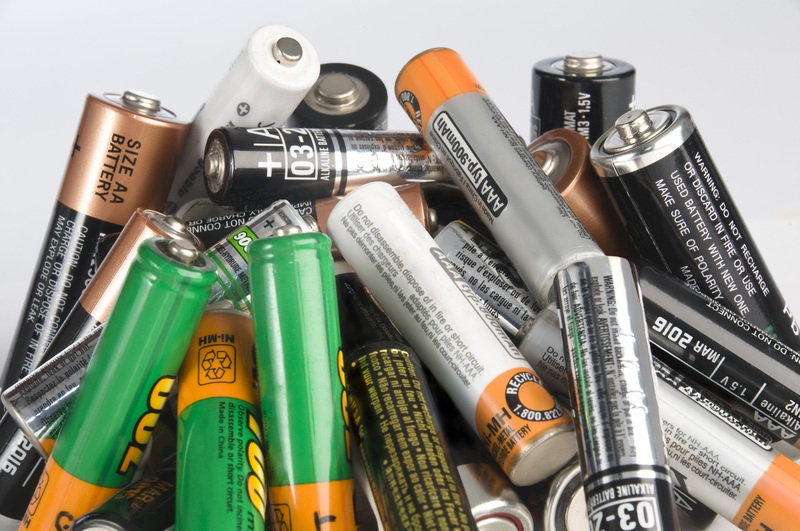Making PPE Cleanup Part of Your Daily Safety Routine
Personal Protective Equipment (PPE) serves as the cornerstone for workplace safety across countless industries. From construction and manufacturing to healthcare and food services, proper PPE use significantly reduces the risk of injury and illness. Yet, one critical step is often overlooked: regular PPE cleanup as part of your daily safety routine. Ensuring your PPE is cleaned and maintained doesn't just extend its lifespan -- it keeps you and your coworkers safer every day.

Why Daily PPE Cleanup Matters
Every day, your PPE shields you from exposure to potential hazards--dust, chemicals, biological agents, physical impacts, and more. However, as PPE accumulates contaminants, its effectiveness can diminish. Regular PPE cleanup is crucial to:
- Remove harmful substances that could transfer to your skin or be inhaled later.
- Prevent cross-contamination in communal settings or between different work areas.
- Ensure proper functioning (clean visors, unblocked filters, undamaged fabrics).
- Meet regulatory standards and avoid fines during inspections.
- Prolong the lifespan of often costly PPE items.
Consequences of Neglecting PPE Cleanup
Failing to properly clean your PPE can have serious repercussions. Not only does dirty PPE pose a direct health risk by harboring bacteria, viruses, or toxic substances, but it can also give workers a false sense of security, believing they're protected when they're not. Neglected PPE wears out faster, increasing replacement costs and wasting company resources.
The Essential Steps for Daily PPE Cleaning
No matter your industry, integrating PPE cleanup into your daily safety habit should follow a systematic approach. Below are the key steps to ensure PPE cleaning is effective and sustainable:
1. Inspect Your PPE Before and After Use
- Visually check for signs of wear, tears, or damage.
- Assess for any visible contamination (oil, chemicals, dust, blood, etc.).
- Test moving parts or fasteners for functionality.
If damage is found, remove the PPE from service immediately and report it according to your workplace protocol.
2. Refer to Manufacturer Guidelines
Always consult the manufacturer's instructions for cleaning and maintenance. Using the wrong cleaning agents or methods can degrade materials and compromise safety features. Most PPE comes with care tags or manuals specifying compatible cleaning products and methods--pay close attention!
3. Remove Surface Contaminants
- For hard hats and face shields, use a mild soap solution and soft cloth.
- For gloves, brush or shake off loose debris before washing.
- Respirators/facemasks should be wiped down with appropriate disinfectant wipes.
Never use abrasive materials or harsh chemicals unless the manufacturer explicitly allows it, as these can compromise PPE integrity.
4. Deep Clean as Needed
Some PPE items require regular deep cleaning (e.g., monthly or after exposure to hazardous substances). For example, chemical suits may need to be washed in specialized facilities, and reusable respirator filters must be replaced periodically.
5. Thoroughly Dry and Store Properly
- Dry all PPE completely before storage, as dampness can breed bacteria and mold.
- Store in clean, dry containers or lockers--never in unventilated bags or exposed areas.
- Hang items like safety harnesses to prevent warping or folding damage.
PPE Cleanup Best Practices by Type
Each type of PPE has unique cleaning requirements. Here's a breakdown to make your PPE maintenance routine more effective:
1. Hard Hats and Helmets
- Daily wipe-down with mild soap and water.
- Check and clean internal suspension systems regularly.
- Avoid using solvents that weaken plastic shells.
2. Safety Glasses and Face Shields
- Use lens-safe cleaning solutions or pre-moistened wipes.
- Avoid scratching the lens--dry with a microfiber cloth.
- Inspect for cracks and scratches that impede visibility.
3. Respirators and Masks
- Clean reusable masks after every use with approved disinfectant.
- Replace disposable masks according to usage guidelines.
- Store in ventilated containers, never in sealed plastic bags.
4. Gloves
- Wash reusable gloves with soap and water; dry thoroughly.
- Turn gloves inside out to inspect and clean interiors.
- Dispose of single-use gloves responsibly.
5. Protective Clothing (Coveralls, Aprons, Lab Coats)
- Launder in accordance with manufacturer recommendations.
- Separate contaminated garments from other laundry.
- Never attempt to clean heavily contaminated items at home.
Building a Culture of PPE Hygiene in the Workplace
While having proper procedures is vital, successful PPE cleanup as a daily safety practice depends on cultural buy-in. Here's how you can foster a safety-first mindset:
1. Lead by Example
Supervisors and safety managers must model excellent PPE hygiene. When leaders make PPE cleanup a visible routine, others follow suit.
2. Provide Clear Training
- Offer regular training on why PPE cleaning matters and how to do it correctly.
- Ensure employees understand the risks of poor PPE hygiene.
- Update protocols when new types of PPE are introduced.
3. Schedule PPE Cleanup Time
4. Make Supplies Readily Available
- Stock cleaning stations with necessary soaps, wipes, and brushes.
- Install signage reminding staff of cleaning steps and schedules.
- Ensure waste bins for disposables are conveniently placed.
5. Recognize and Reward Compliance
Positive reinforcement can encourage consistent PPE cleanup routines. Simple acknowledgments, incentives, or team challenges can motivate workers to maintain high standards.
Regulatory and Legal Obligations
OSHA and other regulatory agencies emphasize not just PPE use, but also its maintenance and sanitation. Failure to comply can result in fines, civil liability, or worse--workplace illness and injury.
- OSHA's PPE standards (1910 Subpart I) outline employers' duties regarding cleaning and maintenance.
- Healthcare, food industry, and laboratories have stricter decontamination protocols.
- Check local guidelines for sector-specific requirements.
Making PPE cleanup a daily safety routine doesn't just check a regulatory box -- it goes a long way toward demonstrating due diligence and caring for employee well-being.
Frequently Asked Questions About PPE Cleanup
Q: How often should PPE be cleaned?
Most PPE should be cleaned after every use or workday. Some items, like disposable masks or gloves, should be replaced instead of cleaned, while heavy-duty gear or those exposed to hazardous substances may need deep cleaning after each shift.
Q: Can employees clean their own PPE at home?
PPE contaminated with hazardous chemicals, pathogens, or biological materials must not be cleaned at home to avoid cross-contamination with personal laundry. Such gear should be cleaned at the workplace or by professional services according to safety protocols.
Q: What should I do if my PPE becomes damaged during cleaning?
Immediately remove the item from service, report it, and use backup gear. Never attempt to repair PPE unless you are trained and authorized to do so -- improper repairs can leave you unprotected.
Q: Can communal PPE (e.g., welding helmets, rental harnesses) be safely shared?
Only if it is thoroughly cleaned and disinfected between users. Always check manufacturer instructions and company policies regarding shared gear.

Tips for Making PPE Cleanup a Habit
- Incorporate reminders into your shift checklist or post signs at workstations.
- Keep cleaning materials accessible to eliminate excuses for skipping cleanup.
- Train for consistency by role-playing correct and incorrect PPE cleaning in safety meetings.
- Request feedback--ask workers what makes PPE cleaning easy or difficult and adapt processes accordingly.
Conclusion: Safety Starts with Clean PPE
Your PPE is only as effective as its maintenance allows. By making PPE cleanup part of your daily safety routine, you can be confident you're giving yourself the best protection possible. Clean PPE performs better, lasts longer, and signals to everyone that safety is a shared priority. Invest now in daily cleaning habits -- your health, your coworkers, and your company will benefit for years to come.
Start today: Review your current PPE cleaning routines and set an example for a safer, smarter workplace!